Read Our
Winery Blog
Judging wines, it's not a skill, it's an opinion
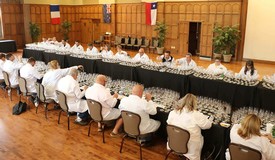 Judging wines... the glitz and glamor of presenting yourself to "critics". Whether it is national publications, International or Statewide competitions, or the latest influencer in the field. What makes this such an important endeavor? Why do wineries create their works of art and then put them out on display in front of "strangers" to see what they have to say? The truth? Marketing!!
Judging wines... the glitz and glamor of presenting yourself to "critics". Whether it is national publications, International or Statewide competitions, or the latest influencer in the field. What makes this such an important endeavor? Why do wineries create their works of art and then put them out on display in front of "strangers" to see what they have to say? The truth? Marketing!!
Wineries, at some considerable expense, present their wines at competitions to see if they can garner accolades and awards. What value these accolades have is precisely proportional to how much importance you are willing to assign to the "judges". Now matter how anyone tries to justify themselves as an expert when it comes to judging wine, whether it be Robert Parker... or Peter Parker, both will spin you a web of comments that will vie for your attention.
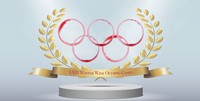 So, let's establish some facts here right now. Judging wine is not a science, it is not a
So, let's establish some facts here right now. Judging wine is not a science, it is not a skill, it is not an olympic sport and it is not a talent. Judging wine is an expression of opinion about a product based on a variety of parameters and preferences. This should not be confused with detecting flaws in wines, or the ability to selectively detect profile identity, or the ability to articulate ones experiences in an attractive manner to make something sound appealing. Those are skills that many can hone with practice. What you are observing is someone being given wine and then being asked "which one do you like best"? You get a gold medal, and you get a gold medal, and you get a gold medal.
skill, it is not an olympic sport and it is not a talent. Judging wine is an expression of opinion about a product based on a variety of parameters and preferences. This should not be confused with detecting flaws in wines, or the ability to selectively detect profile identity, or the ability to articulate ones experiences in an attractive manner to make something sound appealing. Those are skills that many can hone with practice. What you are observing is someone being given wine and then being asked "which one do you like best"? You get a gold medal, and you get a gold medal, and you get a gold medal.
All that being said, that does not mean that the awards, point scores and various commentaries about wine have no value. Indeed you may often find that you agree with the judges that made a wine double gold, best of class and 98 points. Most judges in respected competitions have an established background in wine, and as most competitions are "blind tastings" they offer their best evaluations based on their palate experience. It is just that at the end of the day, their scores are based upon their preferences plain and simple.
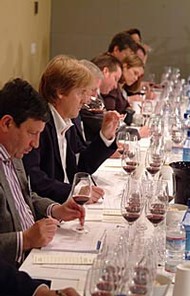 So... have you ever wanted to be a wine judge? Well it is not all glamor. Try sitting down and tasting 120 Zinfandels in three hours, all served blind, some of them just downright awful, some so rich and powerful they will grow hair on your tongue, and a good portion of them being similar enough that they would be hard to tell apart. Which one is the best? Rest assured that if you did this for 3 days in a row, you would very likely not choose the same wine each time. Oh but what a challenge!!
So... have you ever wanted to be a wine judge? Well it is not all glamor. Try sitting down and tasting 120 Zinfandels in three hours, all served blind, some of them just downright awful, some so rich and powerful they will grow hair on your tongue, and a good portion of them being similar enough that they would be hard to tell apart. Which one is the best? Rest assured that if you did this for 3 days in a row, you would very likely not choose the same wine each time. Oh but what a challenge!!
So... now you are ready to become a wine judge. I choose this term carefully because it is decidedly different from being a wine critic, try not being a critic. If you take one thing away from this entire piece, it should be that when it comes to judging wine it is always best approached from the perspective of searching for the positive qualities of any wine. If you task yourself with finding the flaws in wine it is pretty rare that you will not find them and that just starts you off in the wrong direction. Be a wine appreciator, not a critic.
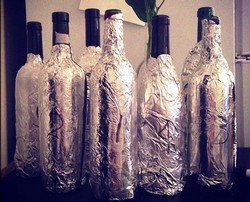 The best way to start "judging" wine is by hosting an event with friends. With enough interest this can evolve into a most pleasurable monthly get together. First, choose your participants, then choose the wine. 6-10 people is a good number but that part is entirely up to the host. Then when choosing the wine choose the varietal and the vintage, like 2019 Pinot Noir or 2020 Chardonnay. Now task everyone to bring a bottle that fits your chosen category and make sure you have time to get the wine to optimal temperature etc. Now, strip any telltale foils off the neck of the bottle, and then wrap each bottle all the way up to the neck in foil. Then, have someone else take over, mix up the bottles and use a sharpie and mark them 1-8 or whatever.
The best way to start "judging" wine is by hosting an event with friends. With enough interest this can evolve into a most pleasurable monthly get together. First, choose your participants, then choose the wine. 6-10 people is a good number but that part is entirely up to the host. Then when choosing the wine choose the varietal and the vintage, like 2019 Pinot Noir or 2020 Chardonnay. Now task everyone to bring a bottle that fits your chosen category and make sure you have time to get the wine to optimal temperature etc. Now, strip any telltale foils off the neck of the bottle, and then wrap each bottle all the way up to the neck in foil. Then, have someone else take over, mix up the bottles and use a sharpie and mark them 1-8 or whatever.
Ideally you will have enough glasses so that everyone can have a glass for each wine. Wine glasses would be ideal, but really any glasses will work. Now line up the glasses 1-8, pour about 1 1/2 oz of wine number 1 into glass number 1, same wine number 2 into glass number 2 etc. Once all the wines have been poured, you are ready to do some tasting, and have something to write with and on so you can create your own comments and scores.
Now, start with with wine number 1. Look at it, smell it, taste it. What do you think? Try to extract as much information as you can from your first impression and take some notes so you can describe the expreience that wine gave to you. Articulating flavors takes practice, but the main thing is to be honest, and if possible try to be creative.
 Taster 1 ..... Nice color, pleasant aroma of cherries, tasted like cherries and blackberries, smooth tannin. Rank 3
Taster 1 ..... Nice color, pleasant aroma of cherries, tasted like cherries and blackberries, smooth tannin. Rank 3
Taster 2 .... Clear garnet, cherry blossom aromas with notes of oak and sage, light cherry flavor with charred oak and medicinal overtones. Astringent finish with bitter tannins that leave the mouth parched. Rank 8
Same wine, two opinions. Always remember there are no wrong opinions, just different ones. We do not all like the same thing
Then take a few seconds, drink some water or eat some bread, whatever you think will work for you. Now go to wine number 2 and put it to the same test. Proceed one by one until you have completed the first round of tasting. After having established an opinion on each wine, now you are ready to judge them against each other. Feel free to add to your notes as some wines will change with time in the glass. Then rank them once you have tasted them all. It is usually easiest to eliminate your least favorites and not taste them any more and assign them the lower ranks. Your top choices may take some back & forth to choose a favorite.
The idea behind having them all poured is you will want to go back & forth a few times as you taste, compare and establish your opinion. Before you are done rank the wines in your order of preference (be sure each participant puts their name on their score sheet so you know whom to give it back to) and then build a score card spreadsheet so you know which wine scored the most and which scored the least points. So for instance if you have 10 participants with 10 wines, 10 would be the top rank, and 1 would be the lowest. Add up the total number of points for each wine. The one with the most points is the top wine, and the one with the least points comes last. Guess what? You just became a judge!!!!
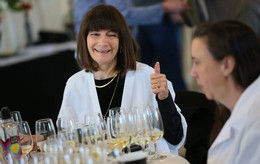
Now the fun part. Go around the group and have everyone express their opinion about the wine with the lowest score and share their ranking for that wine. How many ranked that wine the best? How many ranked it the worst? Keep score as you will likely find not everyone likes the same wine. Once everyone has lodged their opinion and ranking, unwrap the bottle . Whomever brought that bottle should at least know where they got it and how much it was. Repeat for each bottle one at a time until you have gone through the whole lineup. In the end which wine scored the most "best" scores? Was it the $100 bottle of Williams Selyem? The $38 bottle of Ektimo? The $7 bottle of two buck chuck? Now that you know what they are go back and see if they taste different now that they have a label.
The moral here is that your "judging" is by far more important than the judging of Master Sommelier Bubba Burgundy, because unless Bubba is buying that bottle of wine for himself his opinion is pretty worthless. If you get lucky, your favorite wine will fall well within your budget so that you will be able to enjoy it regularly. If not, sometimes you just need to create a special occasion.